A few months ago, my mother sent an article over to me via email and said “I think you might like this for you blog”. I opened it up and it was a small article on a Canadian woman named Ruth Lowe (who I had never heard of). It was a very interesting read about her life, her famous song “I’ll Never Smile Again”. and how she played a BIG part in Frank Sinatra’s success. Indeed a perfect post to share with my readers and today friends…..is that day.
Meet the beautiful & talented Ruth Lowe.
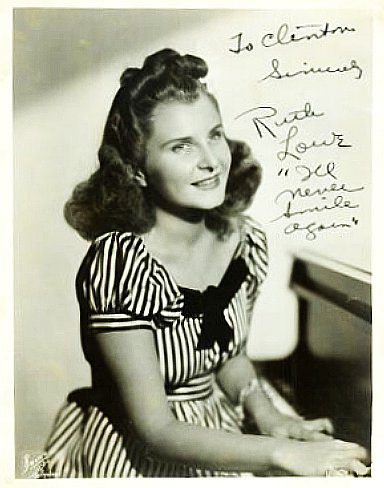
And now please take a moment to acquaint yourself with her song “I’ll never smile again” (Link to video).
For further reading please check out all the posts I have done on the subject, “Women of the Big Band Era Everyone Should Know“. (Jan 2024 update)
Ruth Lowe-The Canadian Woman Behind “I’ll Never Smile Again”
Ruth’s Earlier Years:
- Born in Toronto, August 12th, 1914 to US-Canadian parents.
- They moved to California when she was very young and she lived there during her early teens.
- The family returned to Toronto with only the piano after her fathers grocery business went sour during the depression. The same piano that Ruth and her sister Mickey had learned to play on.
- After her father died, Ruth quit school at 16 and found a job in the ‘Song Shop’ where she demonstrated sheet music on the piano. This trade was called “Song Plugging” and if customers liked what Ruth played (plugged) they would take it home to learn.
- During her evenings, Ruth played in a very intricate two piano act with her friend Sair Lee at various nightclubs.
- One day while at the store, Lowe heard that the famous all-female Ina Ray Hutton Orchestra (The Melodears) needed a piano replacement for their 1935 appearance in Toronto. She got the job and so impressed Hutton that she ended up touring the United States with the orchestra for a few years after (Source).
Here is a clip from 1936 “Doin’ the Suzie Q”, that I believe should feature Ruth on the piano. Can we also take a moment to be in awe of Ina’s outfit…wow! (Video Link)
How the song “I’ll Never Smile Again” came to be:
While traveling with the Melodears in 1938 in Chicago, Ruth met Harold Cohen a music publicist and fell madly in love. They were married and lived happily until a year later Harold died tragically during surgery*. Ruth returned home to Toronto devastated and during this grief she penned “I’ll Never Smile Again”.
Lowe told the Toronto Daily Star in 1940 that the ballad “seemed to fill my head and guide my fingers as I picked it out on the piano (Source)”.
Here are the sad words Ruth Lowe wrote:
I’ll never smile again until I smile at you
I’ll never laugh again what good would it do
For tears would fill my eyes
My heart would realize that our romance is through
I’ll never love again I’m so in love with you
I’ll never thrill again
To somebody new within my heart
I know I will never start to smile again
Until I smile at you
Within my heart I know
I will never start to smile again
Until I smile at you.
Song Success and Frank Sinatra:
Life went on and Ruth found herself working as an accompanist at the CBC (Canadian Broadcasting Corporation), where she passed on the sheet music to the song to Toronto composer-conductor Percy Faith. Percy would later record the song for his CBC radio program ‘Music By Faith’. The Song made it’s official Debut!
It was not till a few months later though when the famous Big Band leader Tommy Dorsey was performing at the 1939 Canadian National Exhibition (CNE) that Lowe (who wanted to take her song to the next level) took matters into her own hands. Lowe waited — acetate recording in hand — by the musicians’ tent for her friend, a guitarist with the band, who arranged a meeting with the New York bandleader at the Royal York Hotel (Source).
One year later Dorsey who liked the song and thought it had some merit, decided to test out on a ‘Coming-Out’ number for Frank Sinatra, who had joined the orchestra as their new vocalist.
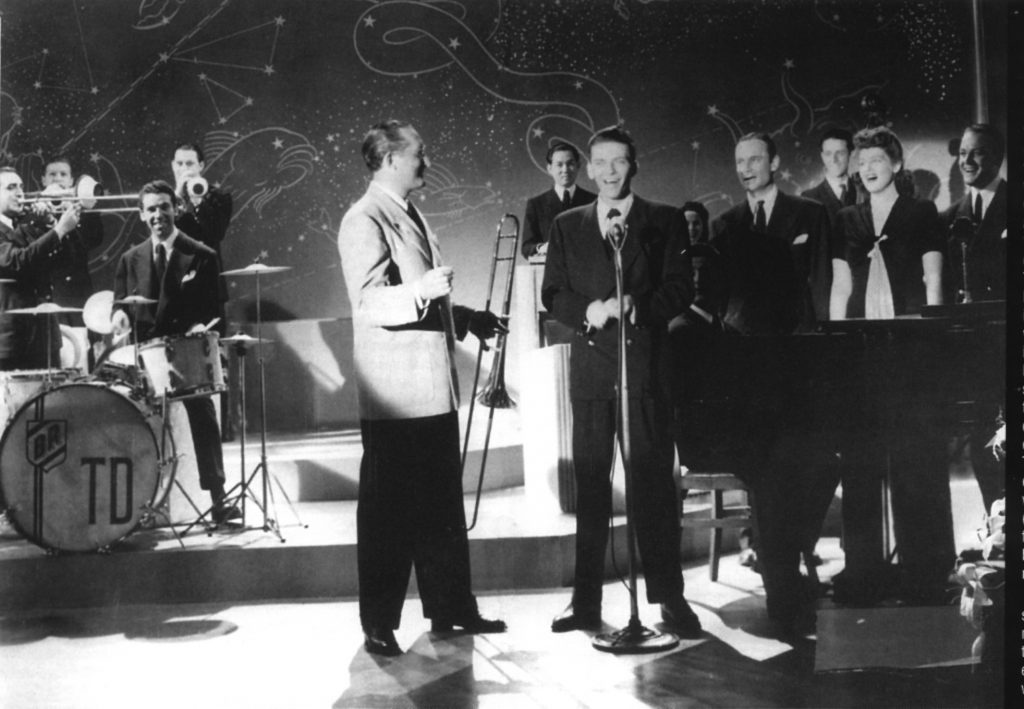
The recording, of “I’ll Never Smile Again,” was released on May 23rd, 1940 (as heard in the version I posted above).
The Song was a SUCCESS! It was No. 1 track on the very first Billboard sales chart in 1940 (seen below) and it propelled Sinatra into Super Stardom that would carry on for decades.
Lowe told her son (Tom Sandler) that the timing — it was the beginning of the Second World War — was key to her success. “It was a song that spoke to everyone in the country,” he says. “Their loves were going to war and most of them weren’t coming back” (Source).
After this success, Ruth was approached by Sinatra in 1942 to write a closing song for his radio program. The song she wrote was “Put Your Dreams Away”, which would go on to become Frank’s Signature Song (Video Link).
Life after Frank…
Ruth married Nat Sandler and happily settled into married life and kids in Toronto. She continued to write songs and play the piano, but her day’s of traveling with orchestras and pushing for her music to be produced were behind her.
In 1955 one of the most popular television shows at the time, “This is Your Life,” devoted a full segment to Ruth Lowe. She was loved that much by the public.
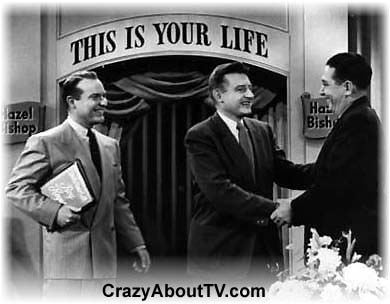
Ruth passed away on January 4th, 1981 at the age of 66. In 1982 her 1940’s “I’ll Never Smile Again” received an honorary Grammy and in 2003 she was inducted into the Canadian Songwriters Hall of Fame
In the end Ruth’s greatest tragedy ended up bringing her career success and a place in history. The only thing left is for Ruth to have greater distinction in the Canadian music world. Her son Tom is pushing for her to receive a star on the Canadian Walk of Fame and to also be acknowledged by the Junos (The Canadian Grammy’s). I could not agree more and I do hope it happens sooner then later.
Thank you for the music Ruth.
UPDATE: NEW BOOK TO READ! Until I Smile At You by Peter Jennings. Peter was chosen by the family of Ruth to write this book, so this is going to be the best insight to Ruth out there. CLICK HERE TO PURCHASE.
FURTHER READING:
- Vintage Women’s History blog posts by the Vintage Inn Blog
- Women of the Big Band Era Everyone Should Know
Liz
*Other sources have said that Ruth’s husband died after 2 years of marriage

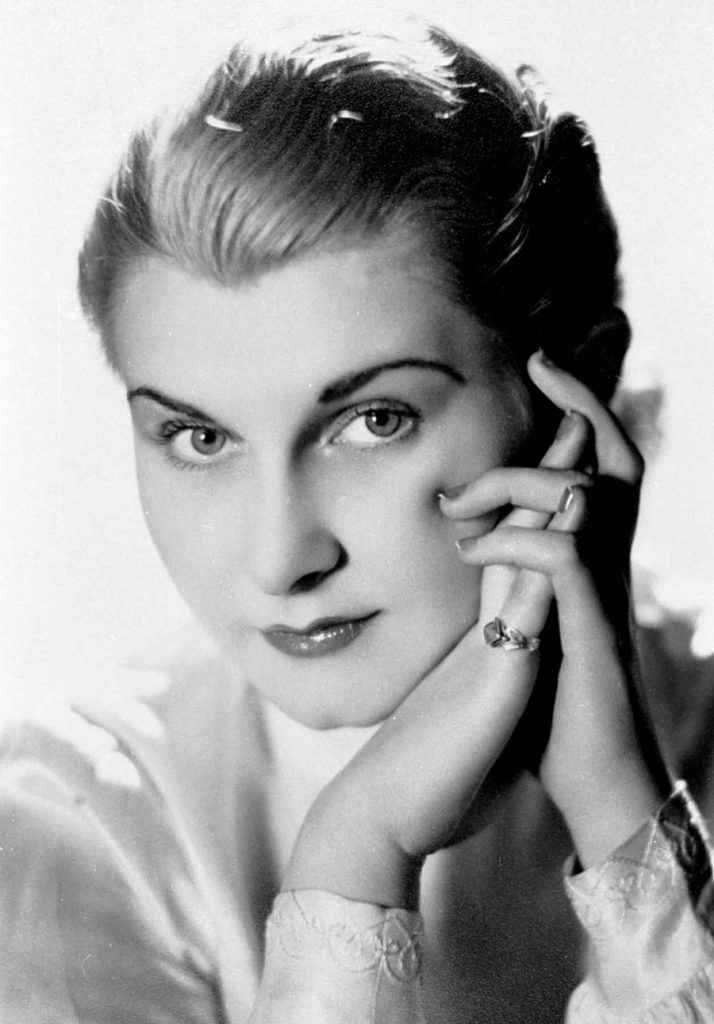
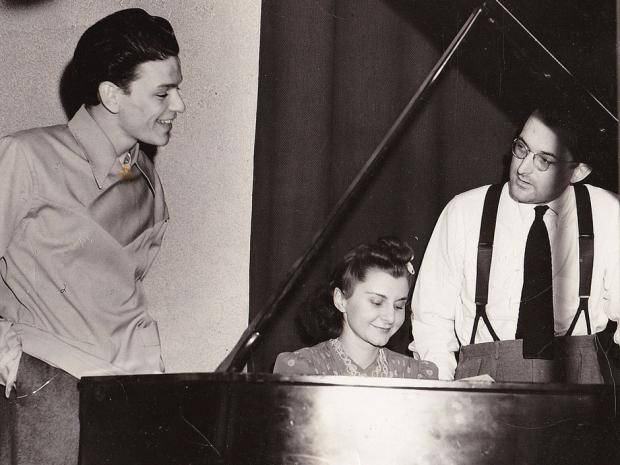
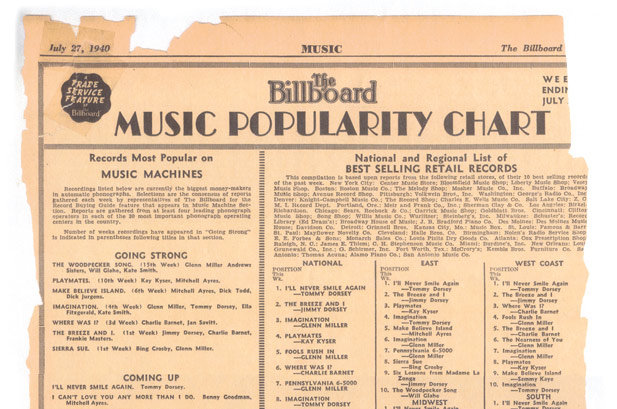
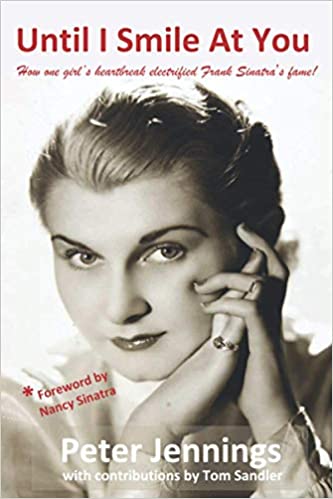
This is so I interesting. I love hearing about these largely forgotten stars
It was really fun to research too, I had never heard of her till my mom pointed me her way and now I’m happy I did.
This is brilliant. I love that song and have sang it often. I don’t think I’ve used it in my vintage fiction writing, yet. Hmmmm. Ideas. Thanks for the education. I had no idea. I love her and want to know even more about her now. Thank you thank you thank you!
Yay I’m glad you learned a bit of vintage history! Ruth’s son would be so very happy about this, glad i could do my part to spread the word 🙂
What a beautiful song! A terribly sad story but a lovely piece of art to come out of it. I also love the idea of Song Plugging as a job!
Song Plugging would be pretty fun if you enjoyed singing and playing the piano. I would hate it personally lol!
Hi Liz. Just came across this and wanted to let you know my newest book, “Until I Smile At You”, covers the life of Ruth Lowe. I was chosen by her family to write it. It’s just out now (November, 2020) and available at book stores and at Amazon, Chapters/Indigo, Barnes & Noble, etc.
This is wonderful! Congrats! I will add the book to the post. Thanks for passing this info on.
Liz
BTW Liz, as the guy who has extensively researched Ruth Lowe’s life before writing the book “Until I Smile At You”, I can confirm Harold Cohen, her first husband, died suddenly within their first year of marriage.
Thanks for the update!
Liz
Hi Liz. I was familiar with Ruth Lowe previously, but just a few comments if I may…
Yes, her song ‘Smile’ was Sinatra’s first hit and made him well known (it was ‘The Billboard’s’ #1 hit for 12 weeks!), but he had many other hits as a band singer after that, too. His bandleader Tommy Dorsey and arranger Axel Stordahl were really the “big” elements to his early success.
Also, an important part of ‘Smile’ was The Pied Pipers backing harmonies which included the legendary Jo Stafford.
‘Smile’ had previously been recorded by Ray Eberle with Glenn Miller Orc, but that version was not released.
The most important thing about Ruth Lowe was that ‘Smile’ was a very important song for the entire music business. Radio was having a boycott of song material controlled by ASCAP (who represented the establishment (Tin Pan Alley) music publishers) in an argument over licensing fees. Radio formed their own rival Performing Rights Society (which represented music publishers) called BMI. At the time radio networks would now only play their own BMI songs. BMI supported the many obscure and small songwriters and small publishers that ASCAP had ignored. ‘Smile’ was the first time a BMI song had been a huge hit, and the industry had begun changing. (BMI also supported the singer-songwriter model we know well today).
A ‘song plugger’ is actually a salesman who worked for Music Publishing Houses to plug (push) songs to the music business (eg. to encourage artists or Record Co. A&R departments to record them, or for D.J.’s to play them on air). Someone playing songs in a music store to plug sheet music is a ‘song demonstrator.’ It could actually be a bit tedious playing the same songs dozens of times each day.
I have the feeling that Lowe may have been a bit dramatic at times. When the Lowe quote said “most of them [the servicemen] weren’t coming back” that was obviously an exaggeration as less than 5% of U.S. servicemen were killed.
She also made a famous quote during the war that ‘Smile’ was written for her husband who had died in combat. However, her demo version was ready by Sept 1939 (just as the war started for Commonwealth countries) and he wasn’t even a serviceman. You have given the correct info on that.
Thanks for the info I appreciate it.
Liz